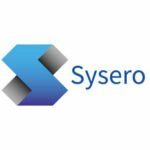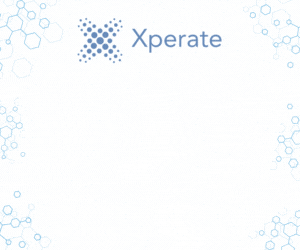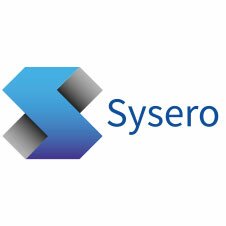Sysero: Top five workflows to automate for greater agility
There’s no question that 2020 was a year of change for law firms. The arrival of the pandemic brought with it the need for flexible working practices, business continuity and enhanced cybersecurity. While the rapid transition to new working practices proved challenging at the time, many firms now realise the benefits of their changed environments.
The pandemic placed tremendous pressure on the current operations of most law firms and modern firms rapidly responded by embracing technology and remote working. This move to more flexible and agile working practices has helped firms drive greater efficiency, increased profitability and enhanced collaboration with clients – and the positive impacts are still being felt. In fact, according to a recent report from Acritas, 80% of law firm lawyers reported that they want to maintain the changes they’ve experienced during remote working, and 20% said they would leave their current firm if it won’t accommodate greater flexibility.
One of the main ways that firms can drive greater agility and flexibility is through workflow automation. Automating high-volume processes leads to greater efficiency for lawyers and staff, improved work quality and helps boost profitability. Here, we look at five workflows that demand automation in today’s agile firm.
Client Intake & Acceptance
While firms once welcomed new clients with a handshake, in today’s work-from-anywhere world firms need to be able to quickly accept new clients and matters online. Traditionally, the client intake and acceptance process has relied on manual and time-consuming processes that require information to be entered and cross-referenced across multiple systems. However, firms are increasingly turning to digital client intake and acceptance processes to improve visibility, speed up intake, and ensure compliance.
Take for example, Wikborg Rein’s innovative digital on-boarding solution for clients. Launched in collaboration with PSA Consulting, Wikborg Rein’s digital on-boarding solution leverages Sysero’s cloud-based workflow automation to easily capture client information online, automatically check it against various public registers and information databases, and authenticate clients through their Bank Identifier Code.
By streamlining the client intake and acceptance process and bringing it online, Wikborg Rein has been able to improve quality by automating activities and approvals, ensure compliance through its built-in risk matrix and get to work quicker through faster approvals.
Compliance & Risk Management
As the Wikborg Rein example highlights, compliance is often a complicated and time-consuming challenge. Business practices continue to evolve and the regulatory environment is constantly changing, posing new risks for law firms.
However, the right workflow automation technology can offer a simple solution. Using a tool like Sysero’s workflow automation, firms can create a standardised and enforceable framework for compliance that embeds risk management into every day business processes across the firm.
By automating compliance, firms can easily scale nuanced compliance decisions by modelling them into automated workflows and processes. At the same time, they limit the risk of human error and make it easier for lawyers and staff to comply – even if they’re working from home.
Contract Management
Contract management is a critical process in any law firm, yet it’s also one of the most time intensive. As many firms have experienced, it also becomes quite difficult to manage contracts across multiple locations using traditional processes.
That’s why modern firms are relying on automated contract management solutions to drive efficiency and effectively manage the contract lifecycle from anywhere. From initiation and review to e-signing and storing completed contracts, automated contract management solutions like Sysero enable firms to create a digital, secure and efficient contract lifecycle.
Internal Knowledge & Know-How
The single most important asset within a law firm is knowledge. However, oftentimes that knowledge lives in disparate systems – or remains uncaptured from the minds of lawyers. As the working landscape continues to change, it’s critical that firms effectively capture, maintain and share the expertise of its people across the firm.
Fortunately, legal automation technology makes it possible to streamline many of these processes. Take for example how Sysero enables firms to combine web-based knowledge libraries and process management to turn know-how searches into an eCommerce-like search experience. Workflow automation can also be used to ensure know-how stays relevant by monitoring new and changing know-how through quality notifications and review workflows.
Self-Service Legal Transactions
Law firms aren’t the only ones who’ve changed during the pandemic; today’s clients now demand greater agility, immediacy and value from their legal providers. That’s why forward-thinking firms are commodifying everyday legal transactions through client self-service portals.
While the concept of self-service portals isn’t new, it’s garnered a renewed interest during the pandemic thanks to the flexibility, accessibility and scalability the portals provide. These cloud-based portals enable legal clients to access firm-managed templates and generate new documents on-demand by simply filling out a guided online questionnaire. By giving clients the ability to create new legal documents, when and as required, firms can provide differentiated, always-available client service whilst boosting profitability.
Moving past the pandemic, law firms still need to continue to evolve and adapt to the new agile world of work. Automating key business processes within the firm will make it easier for lawyers, staff and clients to work collaboratively, efficiently and securely.
Are you ready to become a more agile law firm? Get in touch with Sysero to discuss how to put workflow automation to work for your firm.
Summary
We look at how modern law firms are driving agility and flexibility through the adoption of automated legal workflows.



